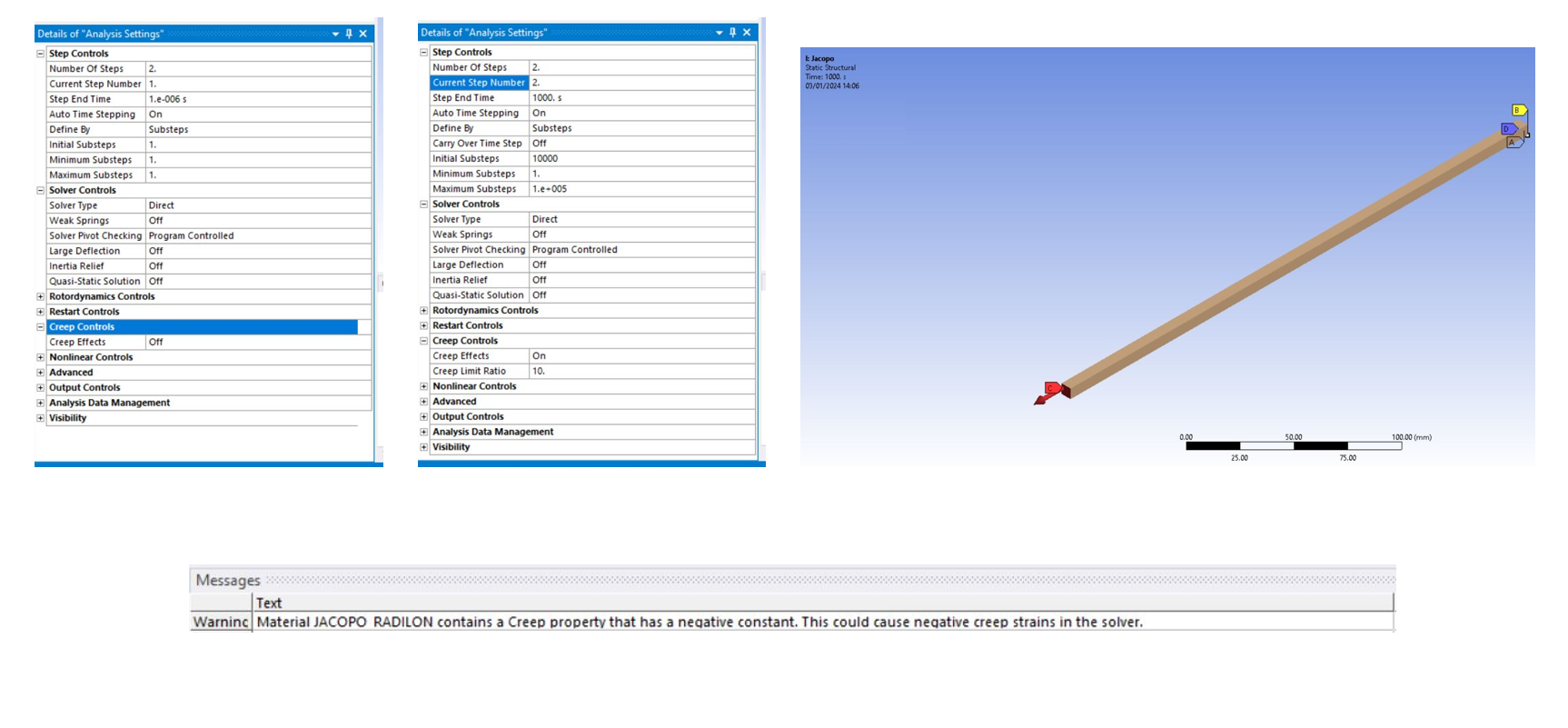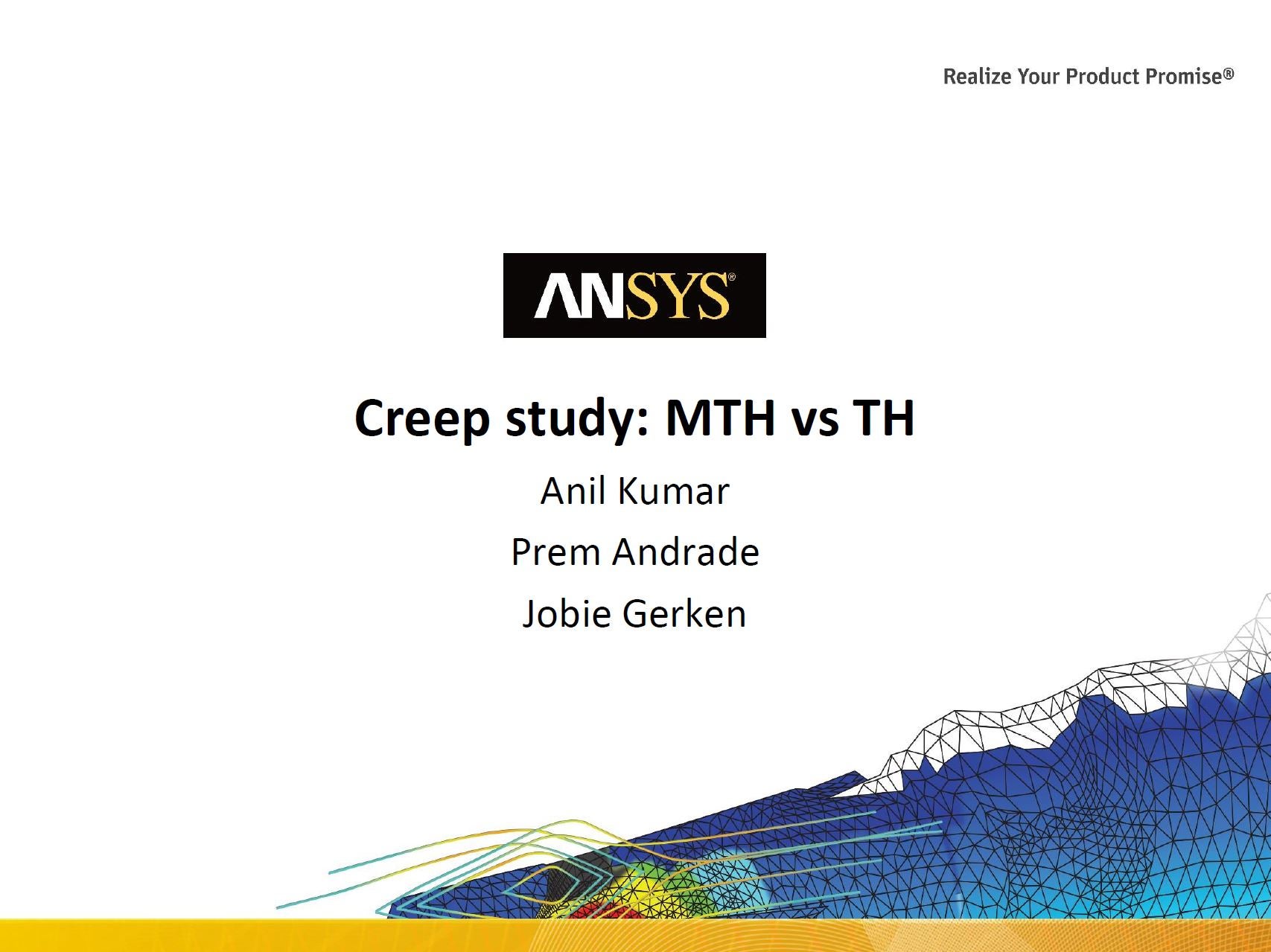-
-
January 3, 2024 at 8:51 pm
Jacopo Bardiani
SubscriberHello everyone,
I'm doing a "Static Structural" analysis on a simple rod, in order to study the creep behavior.
I calibrated the constants of the creep model of the material (Time Hardening Power Law) using the ANSYS creep fitting tool, through experimental data.
The constants of the Time Hardening Power Law model are C1 = 6.41E-05, 7.1E-10, C3 = -0.97186, and C4 = 0.
The analysis has the following features: L = 300 mm, A = 36 mm^2, F = 120 N, E = 4900 MPa, Poisson’s coefficient = 0.4.
The setting of the steps are in the picture attached (with large deformation “ON”).
I find a similar example thanks to some ANSYS developers with an aluminium rod.
When I calculate the creep strain with the Time Hardening Power Law, I obtain a specific value (0.0028 after 1000 seconds), while ANSYS gives me 0.0012.
What could be causing this discrepancy? The example of the ANSYS developers gives perfect match with the same model.
Thanks in advance.
-
January 5, 2024 at 7:15 pm
John Doyle
Ansys EmployeeIt is the same code, so if the two inputs are identical, the results should match. The only way to find what is different is to put the two ds.dat files side by side and do an apples-to-apples, line-by-line comparison of the all input specifications to identify what is different.
-
January 6, 2024 at 11:45 am
Jacopo Bardiani
SubscriberHi John, I haven't redo the model of the three ANSYS developers. I simply took directly their rod model and the only things I changed were material properties (E and Poisson's coefficient, C1, C2, C3, C4). All the other features were like in the original model.
In their model, they used steel, while in my case I'm using plastic.
The problem I see is that the creep results of their material match the analytical formula of the Time Hardening model, whereas in my case there is a discrepancy.
So I'm struggling with this issue.
I did some attempts and the problem is related with the C3 coefficient. In my case, it's negative and this is causing some issue. If I put it >= 0, all works fine.
I see in the manual that there is no limitations regarding C3 in the Time Hardening Power Law.
How can I solve?
-
-
- The topic ‘Discrepancy between creep strain – ANSYS vs creep Model – Simple rod in tension’ is closed to new replies.



-
4628
-
1535
-
1386
-
1215
-
1021

© 2025 Copyright ANSYS, Inc. All rights reserved.









